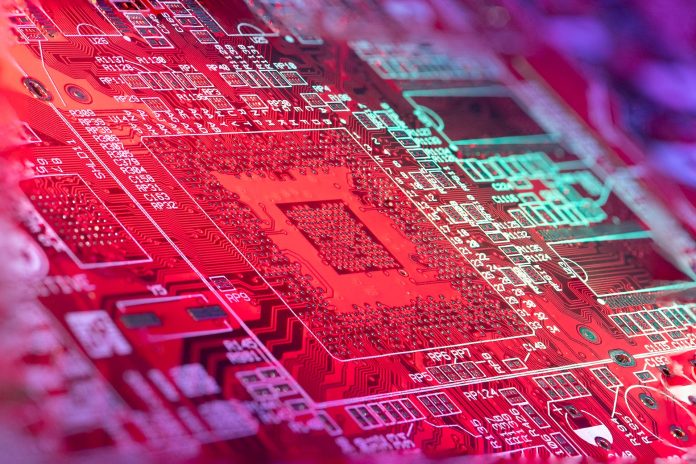The only thing that is consistent in the rapidly evolving world of technology is change. The old is continually being replaced by new trends and waves of change brought about by the quick speed of invention. This transformation is a seismic development rather than just a shift that is changing the fundamental structure of our digital life. Let’s explore how technology is revealing a new, vibrant age by removing its old shell.
1. 5G Unleashed: The Quantum Leap in Connectivity
The introduction of 5G, a quantum leap in connection that surpasses the capabilities of its predecessor, is at the forefront of the digital revolution. The next generation of wireless technology after the 3G shutdown promises huge device connection, lower latency, and unmatched speed. In contrast to its predecessors, 5G represents a fundamental shift that completely changes how one connects and communicates, not simply a little improvement. 5G offers a myriad of opportunities with its 10 gigabit per second speed capability. Imagine being able to effortlessly experience augmented reality, download a high-definition movie in a matter of seconds, or allow autonomous cars to communicate in real-time.
2. Edge Computing: Decentralizing Data for Real-Time Power
Edge computing emerged as a result of the growing need to process data closer to its source as the digital world grew. This paradigm change departs from the conventional approach of processing data by using centralized cloud servers. Rather, edge computing reduces latency and allows for real-time decision-making by moving processing closer to the data source. Imagine this: edge computing in a smart city enables real-time reactions in traffic control systems, guaranteeing smooth operation and lowering gridlock. Edge computing in the Internet of Things improves reaction times and efficiency by enabling local data processing on devices.
3. Artificial Intelligence 2.0: The Evolution of Intelligent Systems
While artificial intelligence (AI) is not a new concept in the computer world, its development into AI 2.0 represents a substantial advancement. Conventional AI concentrates on restricted task optimization and rule-based systems. Conversely, AI 2.0 imitates human cognitive functions and is driven by deep learning, neural networks, and unsupervised learning. AI systems can now learn from enormous amounts of information, make intricate judgments, and adjust to changing situations thanks to this progress. Imagine artificial intelligence (AI) systems that can create original material in addition to understanding context and emotions.
4. Quantum Computing: The Dawn of Unparalleled Processing Power
Welcome to the age of quantum computing, when quantum bits, also known as qubits, will take the place of conventional bits and provide previously unheard-of processing powers. Utilizing the ideas of quantum physics, quantum computers are able to calculate at rates that traditional computers could never match. More than merely quicker calculation, this represents a paradigm change in the way problems that were previously thought to be intractable are solved. Quantum computing, for instance, has the power to disrupt current encryption techniques, improve supply chain operations, and transform medication development. Investing in the advancement of quantum computing technology puts you at the front of a revolution that surpasses traditional constraints and ushers in a time when addressing complicated problems is no longer a barrier but rather a means of creativity and exploration.
5. Blockchain 3.0: Beyond Cryptocurrencies to Decentralized Ecosystems
Although cryptocurrencies are the source of blockchain technology, Blockchain 3.0 expands its use to build decentralized ecosystems. Smart contracts, decentralized apps (DApps), and blockchain network interoperability are all part of this progression. Blockchain 3.0 promotes security, transparency, and trust across several sectors. Envision a supply chain in which all transactions are documented on an unchangeable ledger, guaranteeing credibility and responsibility.
6. Human Augmentation: Integrating Technology with Humanity
Human augmentation is bringing technology and humanity together in the future. This is the use of technology to augment human capacities, ranging from brain-machine interfaces to exoskeletons for physical augmentation and cognitive improvement. Think about the possibilities for better medical care via neural interface-controlled robotic limbs or increased cognitive functions via brain implants. Putting money into human augmentation technologies is investing in a revolutionary field that not only overcomes physical constraints but also expands the definition of what it is to be human.
Conclusion
In a world where technology is always evolving, the advancement of technology promises not just development but also revolution. You may cast yourself as an active player in the story of your digital future rather than simply a spectator by making smart investments in these rapidly developing technologies. It’s not just about the tools you use as technology advances; it’s about embracing a dynamic period when the limits of what is possible are continuously redefined, presenting new problems as well as possibilities and a future molded by the boundless potential of innovation.






